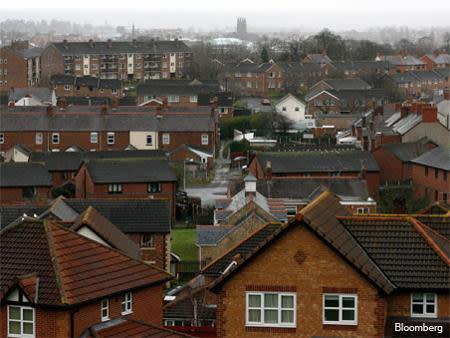Investors used to buy 'alternative' asset classes for diversification. The theory went that you could reduce risk simply by mixing together assets with different return characteristics. Sadly, it was based on historical data that turned out to be irrelevant during the financial crisis - just when it was most needed. Diversification is fine as far as it goes, but it's no substitute for conviction.
So now investors buy alternatives for a more basic reason - because they are, as the name suggests, alternatives to the big three asset classes. Equities are too volatile and too susceptible to macro-economic uncertainty. Bonds are at the end of three golden decades of growth. Cash offers no yield and no protection from inflation. Understandably, investors want other options.
One is commercial property. It's the most mainstream alternative, easier to understand than hedge funds and without the volatility of commodities. Crucially, it also generates an income that looks reasonably secure because it is backed by long-term rental contracts.
That asset-backed income, in an extremely low-yielding environment, lured investors to property as soon as the big crash showed signs of fizzling out in mid 2009, sparking an immediate but highly selective recovery in capital values. London offices, big retail parks or shopping centres and well-located logistics warehouses have all bounced strongly. Meanwhile, smaller, older assets - the kind that would once have been bought by Irish investors using lots of debt - have been shunned. The result is a curious two-tier property market in which assets that offer irrefutable security of income look fully priced while great swathes of the market remain very cheap.
And that gap is getting wider, not narrower. Demand from tenants is weak, and the banks have lots of unloved assets on their books that they are gradually offloading at depressed valuations. Capital values across the whole market dipped 0.7 per cent in the first quarter, according to benchmark provider IPD, and most analysts expect falls of about 5 per cent this year. Only the most recession-proof properties - which tend to be located in central London - can expect to maintain their value.
Investors who are thinking of buying commercial property need to be aware of this difficult market backdrop. Most portfolios will probably be worth slightly less in a year's time than they are now. They should recover in time; yields for all but the best property are pretty high. But that will require both a healthy banking system and economic growth - a combination that may not emerge for a good half decade. So the key question is whether the rental income stream generated by the portfolios is high and strong enough to make the dreary medium-term outlook palatable.
What to invest in
Of course, most private investors don't buy whole buildings, but shares in portfolios of buildings. These portfolios take three main forms, each with problems of its own. Open-ended funds are the simplest, though they have a rocky history (see below). Then there are two types of investment trust, so-called ‘real-estate investment trusts' (Reits) and property investment trusts.
Reits are not really investment trusts at all. They were granted a special tax exemption in 2007 and are run by an internal management team. They form the core of the listed property sector, including FTSE 100 companies like British Land and Land Securities. We cover them in our shares section.
Meanwhile, property investment trusts are offshore vehicles that were set up before the Reit legislation made onshore property companies tax-efficient. Some have since converted into Reits, such as London & Stamford and Hansteen, but most have seen no point. Typically managed by an appointed external team, like traditional investment trusts, they tend to be more passive than the Reits. That has served shareholders much better - the UK property trusts did not wipe investors out with rights issues at the very bottom of the cycle, as the big Reits did. Many have also maintained their dividends throughout the financial crisis.
Protecting shareholders in the crash was valiant, but it has left the sector with two big legacy problems. Relative to today's lower property values, many still have too much debt, which is now hard and expensive to refinance. And some pay dividends that are no longer covered by rental income. That was tolerable as long as capital values were recovering. But now that property prices have started falling again, uncovered dividends will simply exacerbate the declines in net asset value (NAV).
It's worth digging deep into both these issues before you invest. But if you can get comfortable with the risks, you'll find some well-managed and fairly low-cost long-term income investments. We profile the two titans of the sector, F&C Commercial Property and UK Commercial Property, in our fund-profile section. We also give thumbnail sketches of two other investment trusts and two open-ended funds that stand out below.
Standard Life Investments Property Income has few properties in central London and a good deal in the north and Scotland. As a result, it has not bounced as far as the larger trusts and will probably dip in value this year. Yet it is high-yielding, with medium-term prospects of dividend growth. Dividends were cut in 2008, which means dividend cover is now strong. And following a major refinancing last December, its cost of debt will fall from 6.4 to just 3.8 per cent at the end of 2013. A dividend hike should follow.
Picton Property Income's shares trade on a 32 per cent discount to NAV, giving a 10 per cent dividend yield. That mainly reflects concerns about its debt pile, which matures this year and next. Buying its shares is effectively a bet that Picton will be able to refinance on attractive terms. It's a gamble, but it seems likely to pay off in the end, as we explained in our tip last summer (Buy, 49p, 21 Jul 2011).
Threadneedle UK Property Trust is among the best-performing open-ended funds, having lost just 5 per cent over 5 years, with a peak to trough fall of under 20 per cent (compared to roughly 45 per cent for the standard benchmark). Its property is higher-yielding than most, but it also has a low vacancy rate, suggesting it is well-managed. Its weakness is its hefty exposure to retail property. At 4.1 per cent, the yield is also modest.
First-State Global Property Securities is the best-performing open-ended property fund over three and five years. It's not a portfolio of properties, but of property shares. That makes it much more volatile, but also more flexible on market timing and geographic scope than its bricks-and-mortar peers. The managers have used that flexibility to great effect. But with a yield of just 2.6 per cent it's of limited use as an income investment.
| Company | Price p | Market Cap £m | NAV / share p | Discount % | Gearing % NAV | Dividend yield % | Dividend growth 3-year CAGR | TER % NAV |
|---|---|---|---|---|---|---|---|---|
| F&C Property Trust | 104 | 722 | 101 | 3% | 34% | 5.8% | 0% | 1.72% |
| ISIS Property Trust | 88 | 66 | 99 | -11% | 69% | 9.1% | 0% | 2.11% |
| IRP Property Investments | 69 | 75 | 80 | -14% | 81% | 10.1% | 0% | 2.22% |
| MedicX Fund | 80 | 195 | 66 | 21% | 65% | 7.5% | 1.89% | 4.13% |
| Picton Property Income | 41 | 138 | 60 | -32% | 99% | 9.8% | -13.8% | 5.88% |
| Standard Life Investments Property Income | 64 | 86 | 64 | 0% | 83% | 6.3% | -9.72% | 2.67% |
| Schroder Real Estate Investment Trust | 36 | 126 | 47 | -24% | 96% | 11.1% | -16% | 3.19% |
| TR Property | 152 | 487 | 173 | -12% | 12% | 3.9% | 2.89% | 4.20% |
| UK Commercial Property | 72 | 851 | 75 | -5% | 10% | 6.9% | 0.04% | 0.97% |
| Redefine | 35 | 197 | 50 | -30% | 318% | 11.4% | - | 1.36% |
| Source: Capital IQ, Numis Securities | ||||||||












